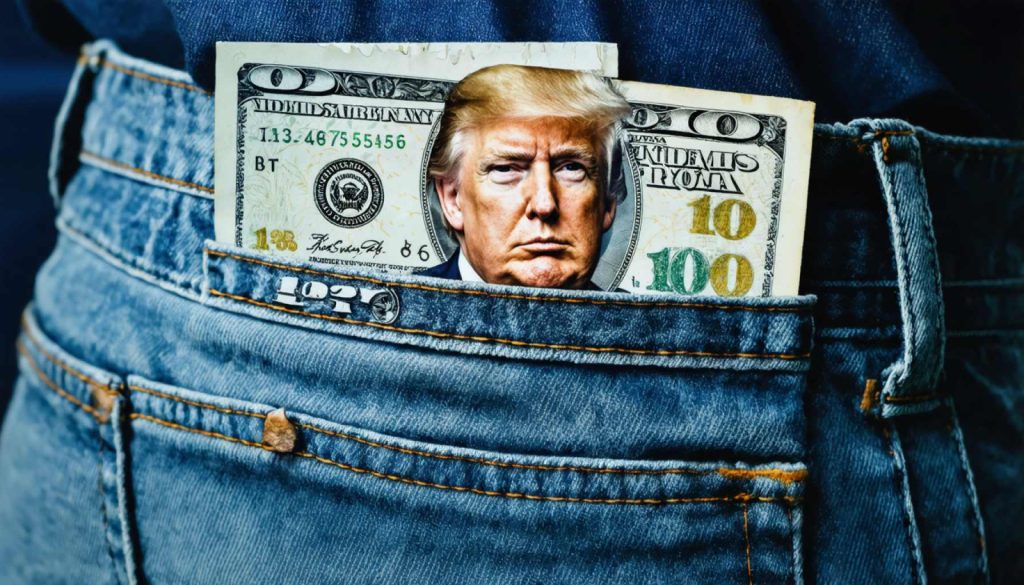
- New tariffs introduced by President Trump are impacting a wide range of imports, potentially increasing consumer prices.
- Perishable goods like tomatoes and bananas may be the first to reflect cost hikes, affecting consumer budgets directly at grocery stores.
- The price increases are expected to extend to clothing, electronics, and automobiles as businesses deplete pre-tariff inventories.
- Low-income households are especially vulnerable as essential goods consume a larger share of their budget.
- Tariffs may negatively influence employment, possibly leading to workforce reductions despite claims of supporting domestic manufacturing.
- Economists caution that tariffs may provide selective industry benefits but do not assure overall economic prosperity.
- Consumers need to adapt and be vigilant about understanding the tariff impact to manage their personal finances effectively.
A sweeping wave of new tariffs rolls across America, sending ripples that may reach the checkout aisle faster than a shopper can recycle their receipt. President Donald Trump’s latest trade gambit, targeting imports from nearly all trading partners, stands poised to infiltrate homes and disrupt the budgets of millions.
From produce to processors, the pinch of tariffs is felt acutely by everyday consumers, as the chain reaction of trade policy reverberates through the economy. This financial repercussion dances first along the shelves of grocery stores. Perishable goods, whose inventory turns briskly, are the early heralds of incoming price hikes. The tomatoes in your salad and bananas for breakfast might soon demand more of your paycheck.
But this is merely the first course. Expectations loom that the impact will ripple outward, touching new clothes, the smartphones in our pockets, and automobiles awaiting a tune-up. As businesses exhaust their pre-tariff inventories, the marketplace faces a hard climb in costs; tariffs don’t just tax goods but trickle down into price tags.
Consumers are not all gripped by this phenomenon equally. The burden mounts heavier for low-income households where essentials—be it a loaf of bread or a gallon of milk—constitute a larger portion of their daily expenditure. Such households watch nervously as small upticks create seismic shifts in their monthly budgeting.
Meanwhile, economists warn us of a more stealthy thief—employment fluctuations. In a landscape where tariffs masquerade as the savior of domestic manufacturing, businesses may begin to curtail costs through workforce trimming. The very notion that jobs and wages might suffer undercuts assurances that tariffs revive local industry.
Yet, as the dialogue pivots to potential policy benefits, the reality on the ground differs. Economists highlight that the dreaming of revitalized industries doesn’t align neatly with the complex tides of global trade. Tariffs may bolster some sectors but won’t necessarily blanket the economy with prosperity—they are more scaffold than panacea.
Ultimately, for the average American household, navigating these fiscal waters involves acute awareness and adaptive strategies. Understanding the flow and consequence of tariffs prepares consumers to weather this economic weather front. In a world that often shapes itself unseen, the challenge lies in seeing and anticipating where these currents will run deepest, guiding personal finances with a tighter grip.
In this complex trade play by Trump, we find ourselves pondering a pertinent question: how long can our wallets, and those most vulnerable, withstand the economic theater unfolding at our doorstep? As shoppers and citizens, the insights we grasp today shape the savvy choices of tomorrow.
How America’s New Tariffs Could Hit Your Wallet: Prepare for Rising Costs
Understanding the Impact of New Tariffs
The recent implementation of tariffs by President Donald Trump marks a significant shift in trade policy with far-reaching implications. This decision affects a broad spectrum of imports from key trading partners, which will undoubtedly influence both consumer habits and broader economic dynamics. Below, we delve deeper into several areas not fully explored in the initial article, providing a comprehensive understanding of these developments.
1. Consumer Goods: What to Expect
– Price Increases on Essentials: As tariffs take effect, essential goods such as groceries will likely see immediate price hikes. This is particularly concerning for perishable items—fruits and vegetables—which tend to feel tariff impacts quicker due to their fast inventory turnover.
– Wider Consumer Goods Impact: Beyond groceries, expect to pay more for electronics like smartphones and computers, vehicles, home appliances, and clothing.
2. Economic Inequality: Who Bears the Brunt?
– Disproportionate Impact on Low-Income Households: Tariffs tend to disproportionately affect lower-income households where basic goods consume a significant portion of their budget. Even slight price increases can stretch these budgets thin, making it crucial for affected individuals to seek savings strategies or government assistance programs.
3. Employment and Industry Dynamics
– Job Market Volatility: Despite the aim of protecting domestic industries, tariffs may lead to job losses if companies cannot absorb increased costs. Workers in industries reliant on imported materials and components are particularly vulnerable.
– Sector-Specific Benefits: While some industries like steel and aluminum might benefit temporarily, the broader manufacturing sector could suffer due to increased costs of imported parts.
4. Global Trade Relationships: Long-Term Effects
– Strained International Relations: Imposing tariffs can lead to strained diplomatic relations and potential retaliation from trade partners, complicating international trade negotiations.
– Innovation Stagnation: Industries dependent on global supply chains might face hurdles that stifle innovation and delay product development.
How to Manage Personal Finances Amid Tariff Changes
To mitigate the impact of tariff-induced price hikes, consumers can adopt several strategies:
– Budget Adjustments: Reassessing and tightening budgets to account for potential price increases in groceries and other essentials can help maintain financial health.
– Alternative Brands and Products: Consider switching to domestic or less impacted brands to potentially benefit from more stable pricing.
– Use of Loyalty Programs and Coupons: Taking advantage of store loyalty programs and coupons can provide some relief by lowering overall costs.
Market Insights and Future Predictions
– Economic Adjustments: The economy may gradually adjust to new tariff levels, leading to stabilization of prices over time. However, the timeline for this is uncertain and could vary by sector.
– Potential Policy Revisions: Given the contentious nature of tariffs, there might be future policy changes or reversals. Staying informed about political developments will be crucial for businesses and consumers alike.
Recommended Actions
– Stay Informed: Keeping up with news on tariff rates and affected industries will enable better financial and business decisions.
– Seek Professional Financial Advice: For those significantly impacted, consulting with a financial advisor for personalized budgeting and investment strategies may offer additional support.
For more information about economic policy and consumer finance, consider visiting the following resource: Trade.gov.
By understanding the implications of these tariffs and preparing accordingly, consumers can make informed decisions to protect their financial well-being in uncertain times.



